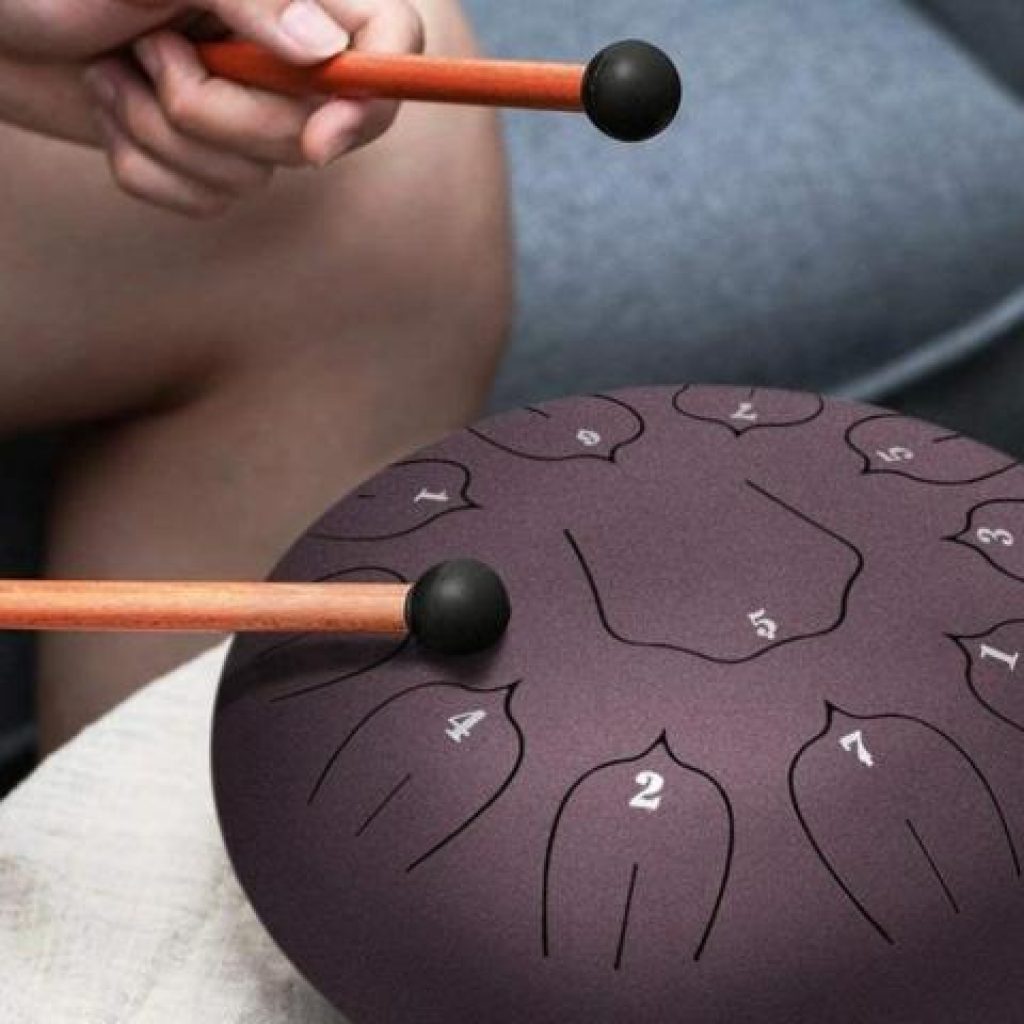The steel tongue drum, a modern marvel in the realm of sound healing, boasts a fascinating history that intertwines innovation, cultural inspiration, and therapeutic resonance. As we delve into the evolution of these enchanting instruments, we uncover the story of how steel tongue drums have found their place as sonic healers in the world of therapeutic sound.

1. Inception and Inventive Spirit: The concept of the steel tongue drum emerged in the 21st century as a testament to human creativity. Inspired by traditional instruments like the hang drum, the steel tongue drum is a testament to the inventive spirit of modern instrument makers who sought to create a melodic percussion instrument that could be accessible to a broader audience.
2. The Influence of the Hang Drum: The hang drum, created in Switzerland in the early 21st century, served as a pioneering force in the development of the steel tongue drum. With its unique design and captivating tones, the hang drum captured the imagination of musicians and enthusiasts alike. The steel tongue drum emerged as a more affordable and accessible alternative with similar tonal qualities.
3. Cultural Inspirations: While the steel tongue drum draws inspiration from the hang drum, it also incorporates elements from diverse musical traditions. The instrument’s design may feature tongues arranged to evoke specific scales or modes, offering players and healers a versatile sonic palette deeply rooted in cultural influences.
4. Therapeutic Resonance: The inherent therapeutic qualities of the steel tongue drum have contributed significantly to its popularity in sound healing practices. The instrument’s resonant and soothing tones, produced by striking the tongues with mallets or hands, create an immersive auditory experience that promotes relaxation, stress reduction, and emotional release.
5. Accessible Sound Healing: One of the key contributions of the steel tongue drum to the field of sound healing is its accessibility. Unlike some traditional instruments that may require extensive training, the steel tongue drum invites individuals of all musical backgrounds to engage in therapeutic sound practices. Its user-friendly design facilitates a direct and immediate connection between the player and the healing vibrations.
6. Integration into Sound Healing Sessions: Sound healers and practitioners have embraced the steel tongue drum for its versatility and adaptability in various healing modalities. Whether used as a solo instrument or as part of an ensemble, the steel tongue drum adds layers of melodic richness to sound healing sessions, enhancing the overall sonic tapestry.
7. Expanding Soundscapes: As the popularity of the steel tongue drum continues to grow, musicians and sound healers explore innovative ways to integrate it into diverse musical and healing contexts. The instrument’s ability to produce ethereal and otherworldly sounds expands the sonic possibilities in sound healing, contributing to the creation of captivating and transformative soundscapes.
8. Global Adoption: From intimate sound healing circles to larger musical ensembles, the global adoption of the steel tongue drum in various cultural and healing contexts reflects its universal appeal. The instrument has become a symbol of the evolving landscape of therapeutic sound, offering individuals a tangible and resonant tool for self-discovery and well-being.
In the tapestry of sound healing instruments, the steel tongue drum emerges as a harmonious thread that weaves together tradition, innovation, and therapeutic resonance. Its journey from invention to global adoption showcases the profound impact that accessible and melodic percussion instruments can have on the exploration of sonic healing in the modern era.